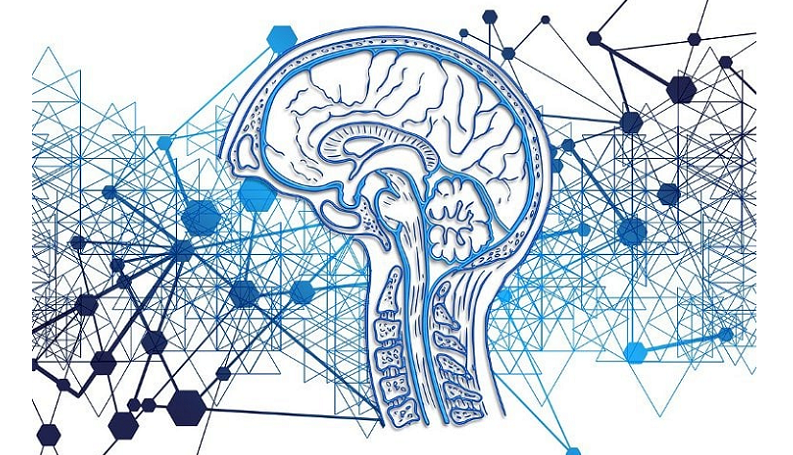
In the intricate tapestry of the human brain, where each thread weaves a story of cognitive function and sensory processing, lies a rarely spotlighted yet vitally important character: the cuneate nucleus. This diminutive structure, nestled within the brainstem, plays a pivotal role in our sensory experiences, yet often remains overshadowed by more prominent neurological players. From its discreet position in the brain’s anatomy to its essential contribution to proprioception and touch, the cuneate nucleus is a testament to the complexity and sophistication of our nervous system.
Contents
The Role of the Cuneate Nucleus in the Brain
The cuneate nucleus, though often overlooked, plays a pivotal role in the functioning of our nervous system. To fully appreciate its significance, it’s essential to explore its location, structure, and function.
Location and Structure of the Cuneate Nucleus
Tucked away in the brainstem, specifically in the lower part of the medulla oblongata, the cuneate nucleus is strategically positioned. Its structure is fascinatingly intricate, composed of a collection of neurons that serve as a relay station in the pathway of sensory information. This nucleus is primarily involved with the transmission of sensory data from the upper part of the body, excluding the face. Understanding its location and structure is key to appreciating its role in sensory processing.
Function of the Cuneate Nucleus in Sensory Processing
The primary function of the cuneate nucleus is to process and relay somatosensory information, specifically touch, pressure, and proprioception, from the upper body to the brain. It acts as a vital intermediary, receiving nerve impulses from peripheral nerves and forwarding them to the thalamus, which then sends these signals to the cerebral cortex for interpretation. This process is crucial for our ability to perceive and react to our environment, making the cuneate nucleus a key player in our sensory experiences [1].
Comparison of the Cuneate Nucleus with Other Sensory Nuclei
While the cuneate nucleus is responsible for sensations from the upper body, its counterpart, the gracile nucleus, performs a similar function for the lower body. Together, these nuclei form an essential duo in the dorsal column-medial lemniscus pathway, a major sensory pathway of the central nervous system. By comparing the cuneate nucleus with other sensory nuclei, we can better understand its unique role and how it contributes to the complex network of sensory processing in the human body.

The Cuneate Nucleus in Action
The true marvel of the cuneate nucleus becomes evident when we observe it in action. Here we focuses on how this nucleus processes sensory information, its role in specific sensory functions, and the consequences of its impairment.
Pathways of Sensory Information through the Cuneate Nucleus
The journey of sensory information through the cuneate nucleus is a complex yet beautifully orchestrated process. Sensory nerves from the upper half of the body, excluding the face, carry information to the cuneate nucleus. Here, the sensory signals are processed and then transmitted via the internal arcuate fibers to the opposite side of the brain. These signals then ascend to the thalamus, and finally, reach the sensory cortex of the brain, where they are interpreted. This pathway is crucial for the accurate and efficient processing of tactile and proprioceptive information [2].
The Cuneate Nucleus Role in Proprioception and Touch
Proprioception, the body’s ability to sense its position and movements, and tactile sensation, the sense of touch, are heavily reliant on the cuneate nucleus. This nucleus gathers information about limb position and movement, as well as touch sensations like pressure and vibration, from the upper body. By processing this information, the cuneate nucleus plays a vital role in our ability to perform coordinated movements and interact with our surroundings. The integrity of these functions is crucial for everyday activities, from the simplest task to the most complex.
Clinical Significance: What Happens When the Cuneate Nucleus Is Impaired
When the cuneate nucleus is impaired, due to injury, disease, or neurological disorders, the effects can be profound. Individuals may experience a loss of proprioception and touch sensation in the upper body, leading to challenges in motor coordination and spatial awareness. In some cases, this can result in a condition known as sensory ataxia, characterized by uncoordinated movements due to the inability to accurately sense body position. Understanding the consequences of impairment highlights the indispensable role of the cuneate nucleus in sensory processing and motor function.
Cuneate Nucleus Research and Discoveries
The cuneate nucleus, a vital yet often understudied component of the brain, has been the subject of intriguing research and discoveries over the years.
Historical Perspective on the Cuneate Nucleus
The study of the cuneate nucleus dates back to the early days of neuroanatomy, when scientists first began to map the intricate structures of the brain. Initially, its role was misunderstood or underestimated, often overshadowed by more prominent brain structures. However, as techniques in neuroscience evolved, so did the understanding of the cuneate nucleus. The advent of more sophisticated imaging technologies and neurophysiological methods brought to light its crucial role in sensory processing, offering a new appreciation for this previously overlooked structure [3].
Recent Studies and Findings Involving the Cuneate Nucleus
In recent years, studies focusing on the cuneate nucleus have provided significant insights. Advanced imaging techniques, like functional MRI and diffusion tensor imaging, have allowed researchers to observe the nucleus in action, revealing its role in processing complex sensory inputs. Moreover, recent findings have also explored its involvement in neuropathic pain and its potential implications in conditions like multiple sclerosis and spinal cord injuries. These studies not only deepen our understanding of the nucleus itself but also offer avenues for developing new treatments and therapies.
Future Directions in Cuneate Nucleus Research
Looking ahead, the future of research on the cuneate nucleus is promising and holds potential for groundbreaking discoveries. One area of interest is exploring its role in neuroplasticity – the brain’s ability to reorganize itself by forming new neural connections. Understanding how the cuneate nucleus adapts to changes, such as after injury, could offer insights into rehabilitation methods. Additionally, further research into its interaction with other brain structures might reveal more about its role in the broader neural network, paving the way for holistic approaches to treating sensory processing disorders [4].

Cuneate Nucleus Implications for Cognitive Health
The exploration of the cuneate nucleus extends far beyond its anatomical and functional aspects; its implications for cognitive health are profound and multifaceted.
Understanding the Cuneate Nucleus and Sensory Processing Disorders
The role of the cuneate nucleus in sensory processing places it at the center of discussions regarding sensory processing disorders (SPDs). These disorders, characterized by the brain’s inability to properly interpret sensory information, can have wide-ranging impacts on an individual’s daily life. By understanding the function of the cuneate nucleus, researchers and clinicians can better comprehend the underlying mechanisms of SPDs. This insight is crucial for developing effective diagnostic tools and tailored interventions to help those affected by these disorders.
The Cuneate Nucleus and Overall Brain Health
The health and functionality of the cuneate nucleus are also indicators of broader brain health. Given its role in processing sensory information, any dysfunction within this nucleus can have ripple effects throughout the brain, impacting cognitive functions such as attention, memory, and spatial awareness. Therefore, maintaining the health of the cuneate nucleus is essential for preserving overall cognitive function, highlighting its importance in neurodegenerative disease research and brain health maintenance strategies [5].
Potential Therapeutic Approaches that Involve the Cuneate Nucleus
The growing body of research on the cuneate nucleus opens up new possibilities for therapeutic interventions. Understanding its role in sensory processing paves the way for innovative treatments targeting specific sensory dysfunctions. For example, neurorehabilitation techniques that focus on enhancing neural plasticity could be tailored to stimulate the cuneate nucleus, aiding recovery in patients with sensory processing impairments. Additionally, this knowledge could inform pharmacological approaches aimed at modulating the activity of this nucleus to alleviate symptoms in various neurological conditions.
References
[1] Cuneate nucleus: The somatosensory gateway to the brain
[2] Integration of Sensory Quanta in Cuneate Nucleus Neurons
[3] Intracellular Dynamics in Cuneate Nucleus Neurons
[4] Regressive changes in sizes of somatosensory cuneate nucleus after sensory loss
[5] Processing Afferent Proprioceptive Information at the Main Cuneate Nucleus

